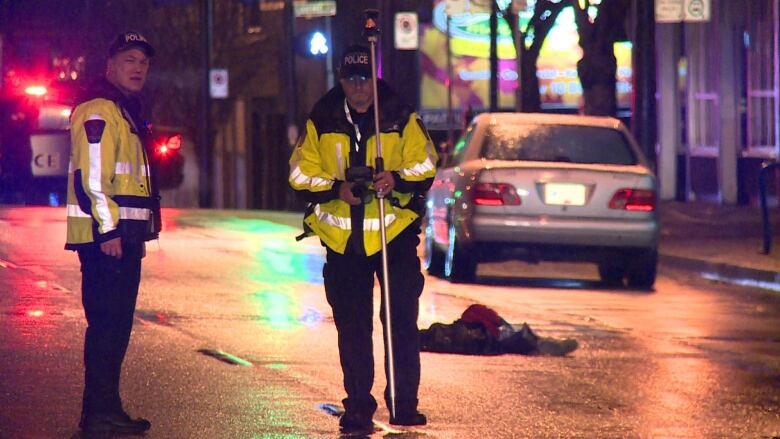B.C. health officials recommend tough new rules for drivers
The 28 recommendations in a new report includes a default 30 km/h speed limit in urban communities

British Columbia's provincial health officer has released a new report on road safety, calling for strict new rules for road users, including a 0.00 blood alcohol limit for all drivers who are 25 years old and younger.
Another recommendation suggests reducing the default speed limit in municipalities and treaty lands to 30 km/h.
The report, titledWhere the Rubber Meets the Road: Reducing the Impact of Motor Vehicle Crashes on Health and Well-being in B.C.makes 28 recommendations, and shares the provincial health officer'skey road safety findings.
- Canada's worst drivers are in B.C., says nationwide survey
- Pedestrian safety: How engineering, planning can help
- ANALYSIS:Cycling safety: Too often, bikes still ignored on Canadian roads
"We've made some good progress. There's some really good news out there. Road vehicle fatalities in B.C. have decreased by about 42 per cent since 1996, so that's the good news," said deputy provincial health officer Dr. Bonnie Henry.

The report says that each year, about 280 people are killed, and 79,000 people are injured on public roads in the province. In 2012, B.C.'s fatality rate from crashes (6.2 per 100,000 people) was the fourth lowest in the country, but slightly higher than the Canadian average.
The report also found that, from 2008 - 2012,the distribution of collision fatalities varied widely across the province.
- 18 per 100,000 people in theNorthern Health region
- 16.3 per 100,000 people in the Interior Health region
- 2.3 per 100,000 people in the Vancouver Coastal Health region
- Provincial average: 6.9 per 100,000 people
The report highlights a decrease in overall road fatalities and serious injury, but an increase in the proportion of incidents that involve so-called vulnerable road users, like cyclists and pedestrians.

In 2007, serious injuries among that group made up 38.7 per cent of the total number, but had climbed to 45.7 per cent in 2011. In terms of fatalities, vulnerable road user deaths made up 31.7 per cent of all road fatalities in 2009 and 34.9 per cent in 2013.
"Now we need to switch the focus, and by switching that focus and making the roads safer for all users, we can bring those fatalities down, hopefully to zero. Nobody in B.C. should be dying on our roads," said Henry.

The report calls for prioritizingcyclist and pedestrian health and safety in road and intersection design, including better lighting and protected pathways.
Some recommendations a challenge
"We've given examples of what we think needs to be done. How it gets done is something that's going to have to be worked out in concert with a number of people across the province," said Henry.
"All of the recommendations are based on data, so we do think there's evidence to support these recommendations, but many of them will be a negotiations," she said. "I think some of the speed limit suggestions that we have, which we feel that are strongly based on evidence, they're going to take some negotiations, some time."
In terms of limiting blood alcohol content to 0.00 for every driver 25 and under, the report assumed the 'conservative' age of 25, rather than a younger one, though the authors admit that choice was somewhat arbitrary.

"There's a negotiation in there, whether it's 21, 25, but there is strong support that it makes a difference," said Henry, adding that the numbers show a spike in incidents, especially for male drivers, around the age that drinking becomes legal.
"I think these are things that there's good evidence to support that people haven't thought about yet, so there's going to be some discussion around that, for sure," she said.
"Clearly, not all of our recommendations will be adopted, certainly not immediately, but we want to be a little bit provocative, we want people to think about alternatives and we want people to take a different perspective to see if we can make a difference over time."












_(720p).jpg)


 OFFICIAL HD MUSIC VIDEO.jpg)
.jpg)



























































































